
Why Dolphins Don’t Belong in the Las Vegas Desert
Have you ever had the chance to observe bottlenose dolphins in the wild? Watching the highly social marine mammals traveling in pods of 10-15, playfully surfing waves, hunting, mating, and protecting each other is unforgettable. Dolphins have even rescued humans struggling in deep water. There’s no question that dolphins belong in the ocean living wild and free from confinement.
Right on the Las Vegas strip, amid the high-rise hotels, bright lights, and herds of gamblers, the entrance to the Mirage Hotel advertises a dark tourist attraction: Live performing dolphins. The beautiful dolphin statues that grace the hotel entrance belie the cruelty of the hotel's dolphin "experiences."
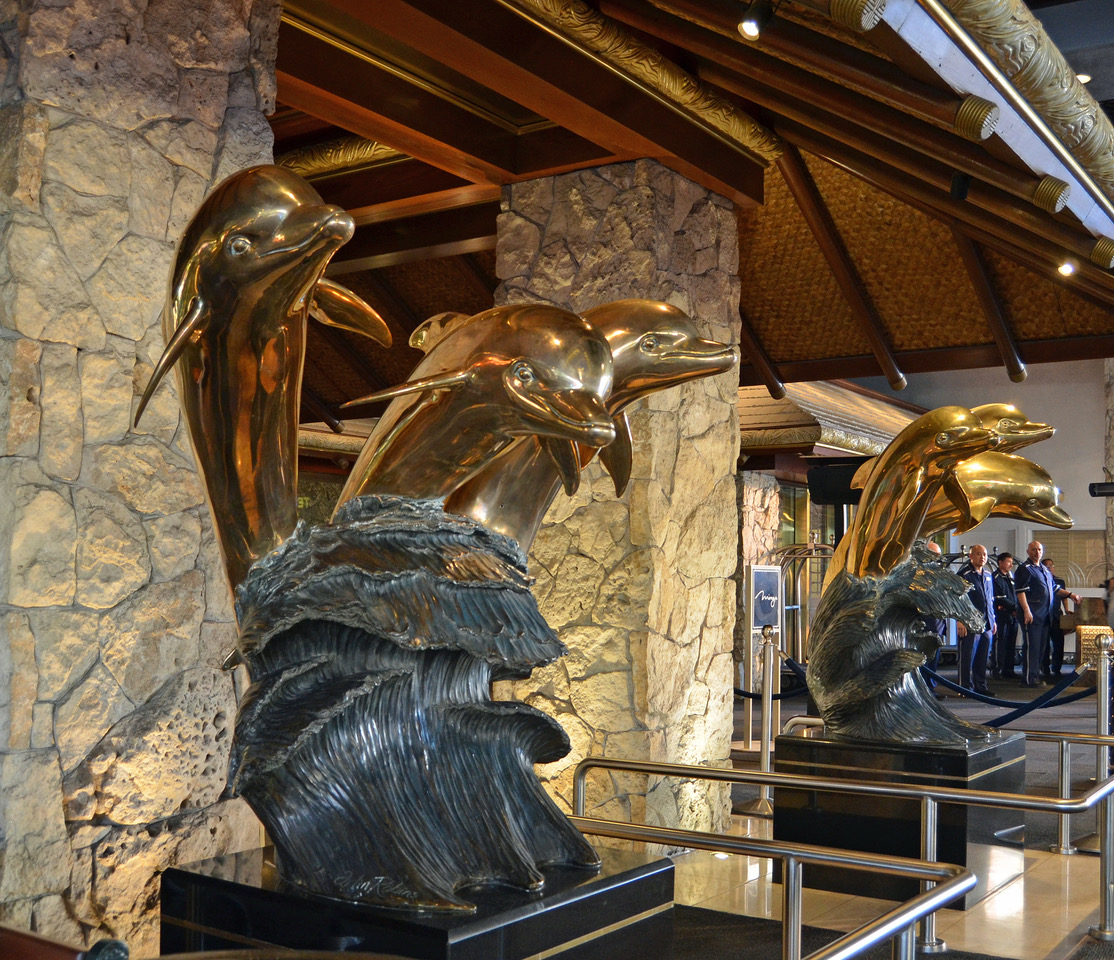
The dolphin exhibit in the rear of the hotel is well maintained and large, but these dolphins simply do not belong here. There are three pools, but two of the tanks are bare of anything of interest to dolphins — only one has an attempt at a rocky bottom to simulate a more natural environment, but that’s it. The tanks hold around ten to twelve bottlenose dolphins.
Twelve dolphins have died at the Mirage Hotel since the exhibit opened in 1990, according to the US Marine Mammal Inventory kept by the US National Marine Fisheries Service.
Activists have spoken out for years about the lack of shade at the Mirage dolphin pools, which exist in the unforgiving desert climate. In the photo below, you can see some shade for the tourists and trainers, but not for the exposed dolphins. This is true of all three of the hotel’s dolphin tanks.
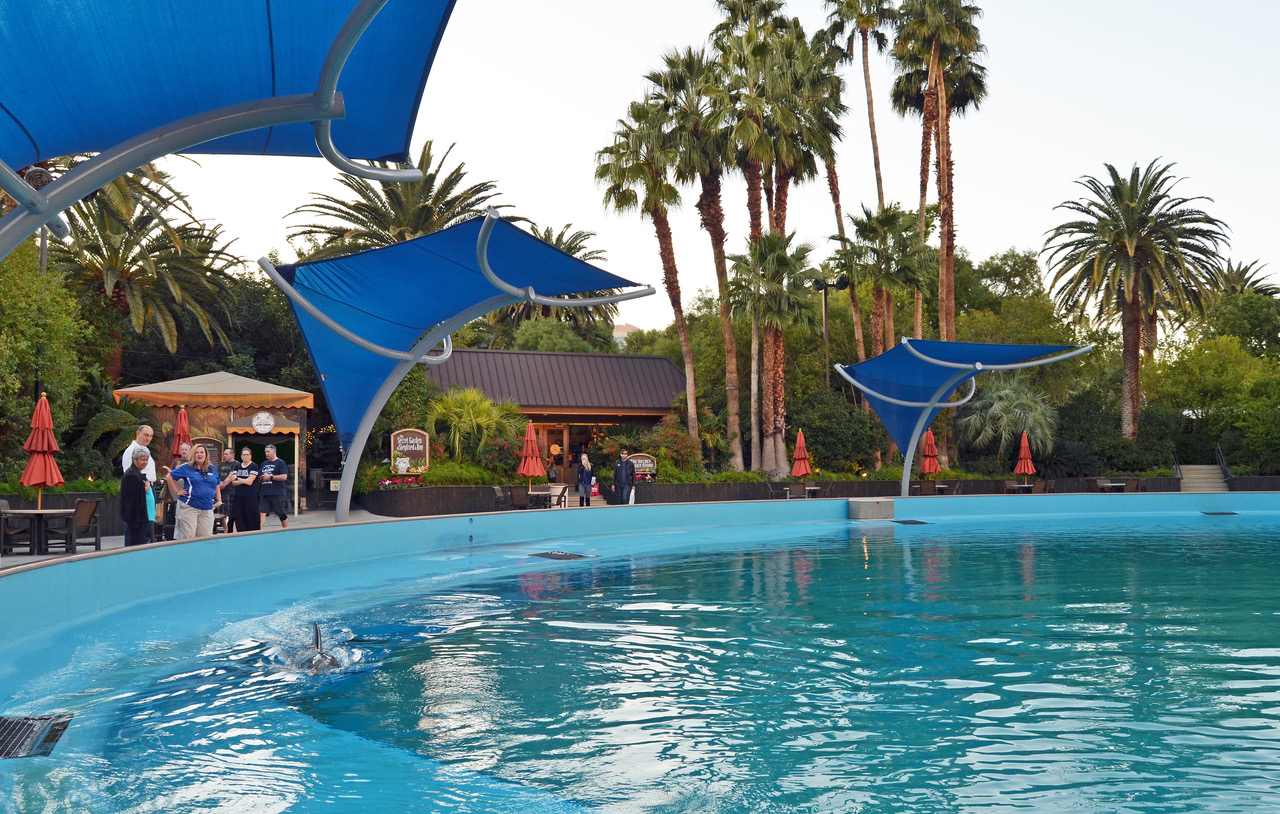
Dolphins in the wild constantly swim and dive, so even in the tropics, they avoid sunburn. But the Mirage dolphins, like most captive dolphins, spend a lot of time at the surface, as there is less incentive for them to dive deep, with no ocean to explore. Just a shallow pool floor.
Every half hour, the trainers conduct a “show,” in which the dolphins perform various tricks for the tourists – jumping, ‘stranding’ themselves, etc. For dolphins to perform tricks, trainers keep them hungry. Starving dolphins are rewarded with food after successful shows. Many people assume dolphins are happy because of their willingness to please their trainers and especially because of their ‘smile,’ a fixed anatomical feature.
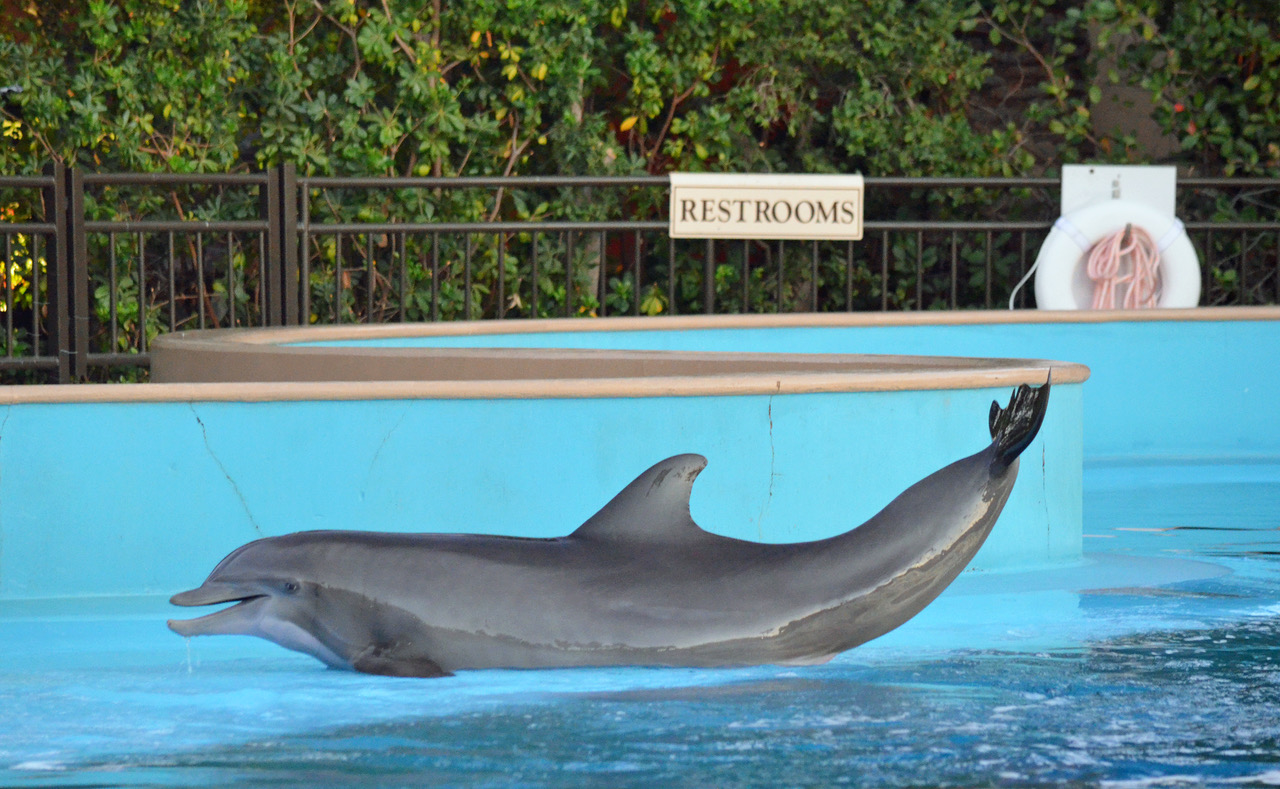
In addition to the shows, which come with the $22 admission fee, there are special extras such as painting with dolphins or a VIP “experience” with the dolphins at the cost of additional fees.
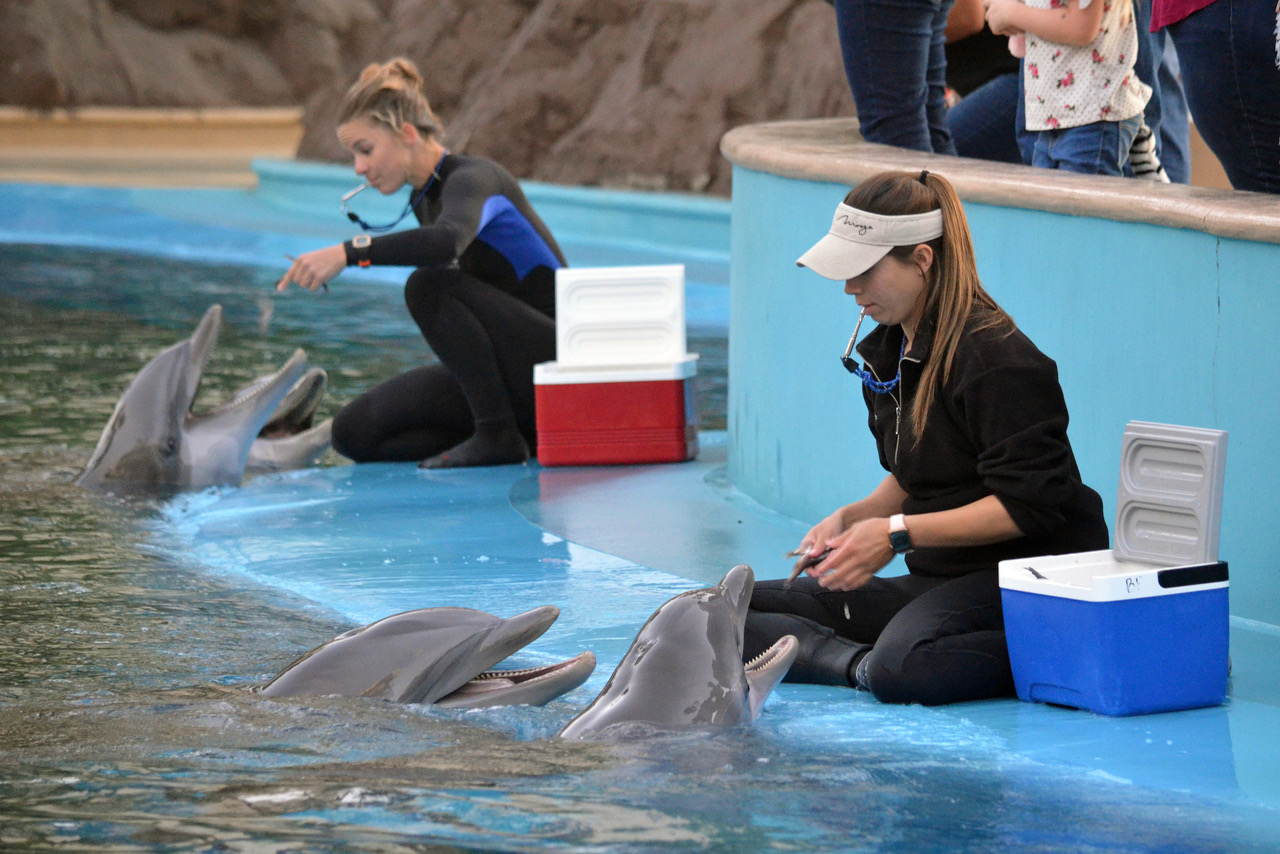
This photo demonstrates the unnatural behavior of dolphins begging for food with their mouths wide open. As Dr. Naomi Rose of the Animal Welfare Institute notes, food in the ocean does not come from the sky.
Captive dolphins face a great deal of stress and boredom, even in the best facilities. Dolphins and other captive cetaceans often chew on the sides of their uniform tanks or gates out of boredom. This causes horrendous tooth wearing and breakage. This photo shows a dolphin who repeatedly bit down on the rubberized gate. This behavior, if conducted on harder surfaces, can cause tooth damage, which can lead to infection and death.
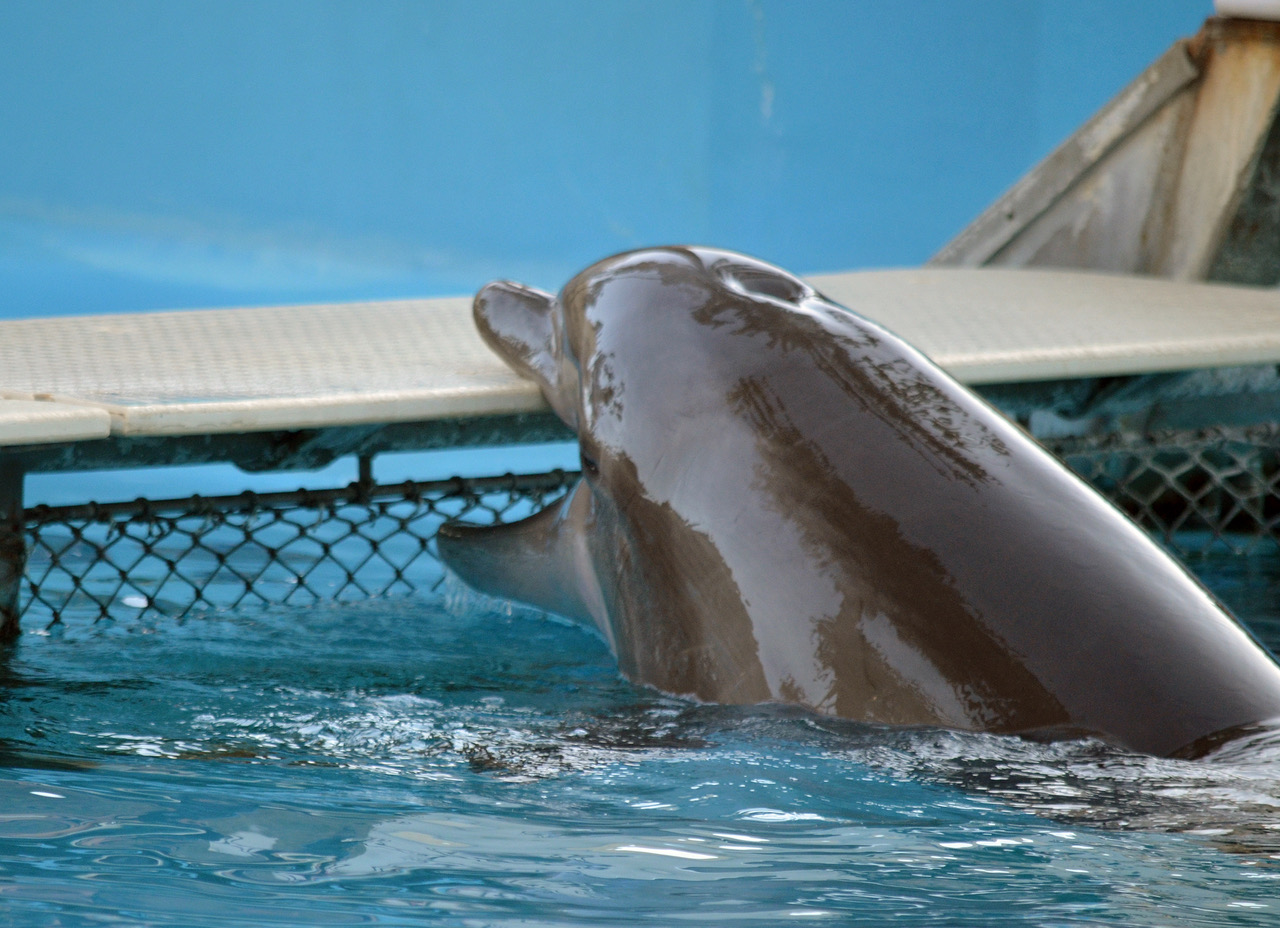
Marine mammal scientists have attributed stress and boredom to a lowered immune system in dolphins, which is why there are so many premature deaths of dolphins in captivity from infections. Dolphins are also administered antidepressants and antacids for stress and stomach problems.
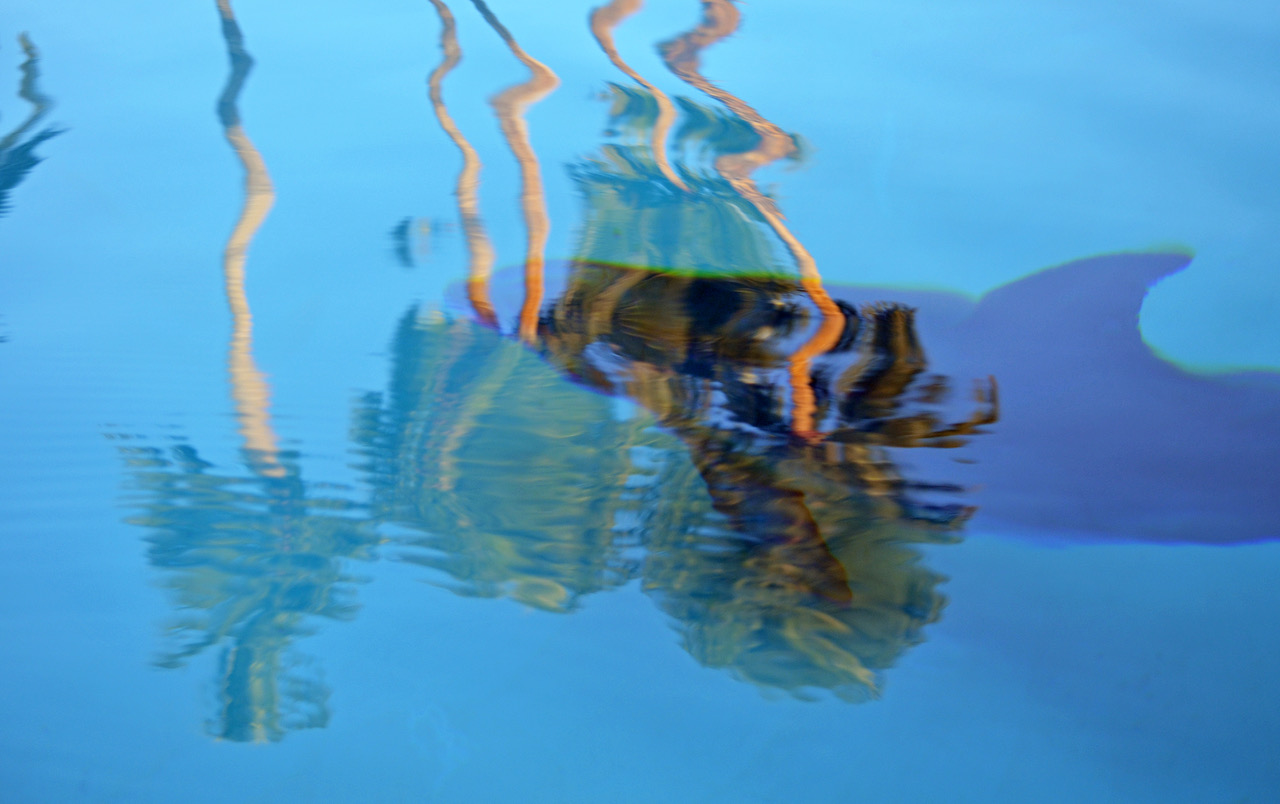
Dolphins don't belong in pools in the scorching hot desert sun of Las Vegas. These incredible intelligent animals suffer in captivity all because humans selfishly desire animal entertainment. Do your research before staying at big hotels or going to amusement parks, and don't buy a ticket!
